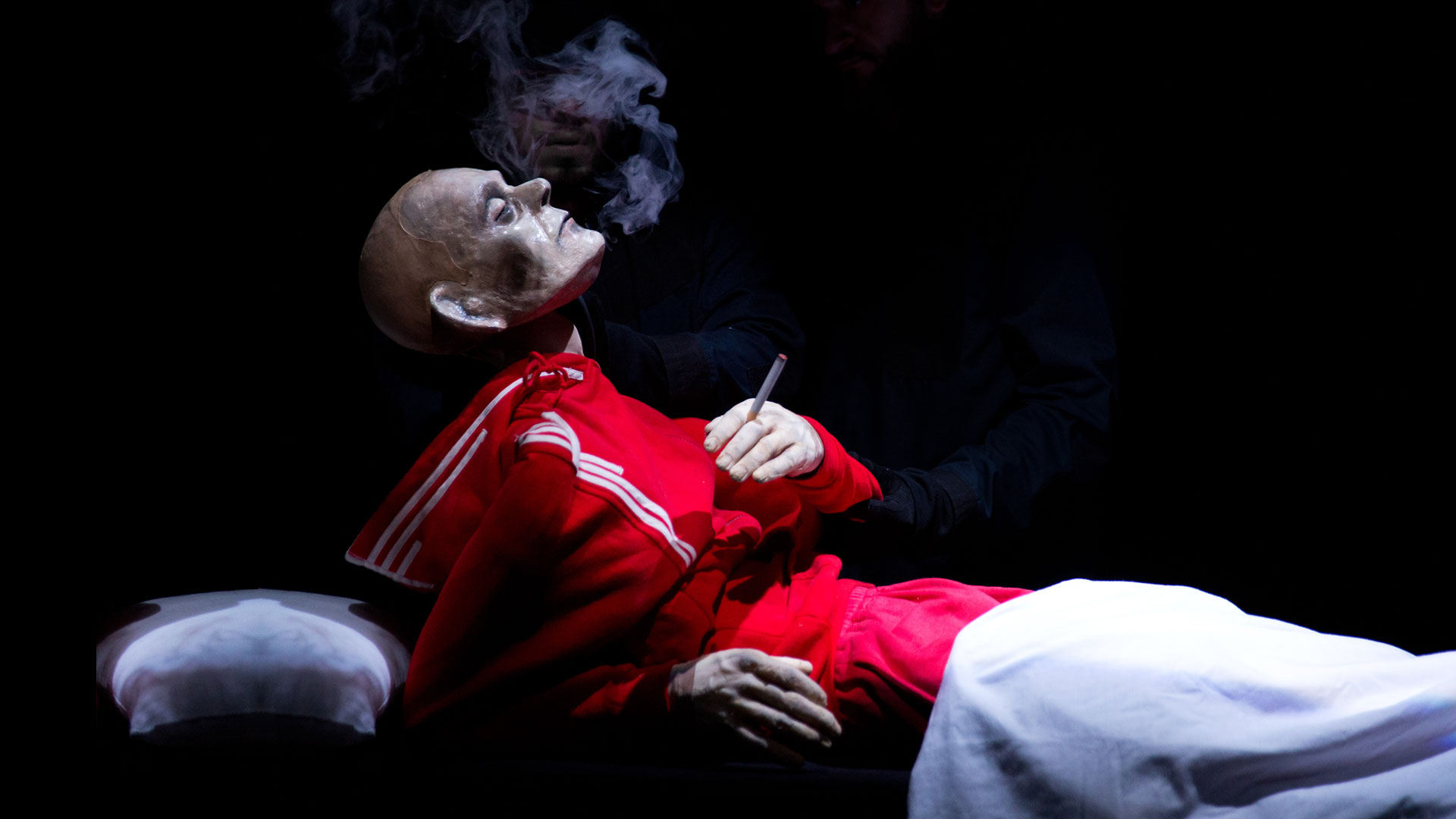Previous work by Yngvild Aspeli, director of Ashes, includes a series of shows by UK-based company Jammy Voo, in most of which (among other things) she performed a different scene where she got into a generally-fatal battle with her own puppet.
In a sense, Ashes is these theatrical moments of struggle writ large. The protagonist is a writer failing to make sense of his obsession with a long-ago series of arson attacks on the town where he lived. Making sense of it by writing about it. And he is fighting pretty much everything and everyone else in his world: his computer, his drink, his research, his memories, his father, himself, his story, and the characters in it.
Formally, the writer is the only character here played by an actor; the rest of the cast (from 1978, the arsonist, his parents, and their small-town community; plus the writer’s recently-deceased father) are played by puppets, in both table-top and near-life-size scale. There is a black scrim that crosses the entire space downstage, and only the writer appears downstage of it, until he can finally tear his obsessions across the divide to join him. The finely-lit puppetry and other action behind the scrim is thus distanced, and able to vanish, fade, and reappear at will; the screen also serves as a place for video to appear (including the only words in the piece). There is also a little huddle of simple tiny model houses, floating upstage in the air, which can be transformed, lit, and set ablaze by the video projection.
The narrative is ostensibly straightforward: in order to write his piece about the arson, and thus gain a firmer grasp of his own identity and purpose, the writer must begin to come to terms in some way with his own relationship to these past events. But we must go down some dark alleyways with him to get there. The puppet dramaturgy is sophisticated and highly wrought, developing from hyperreal domestic tabletop scenes that open the show to incidents of interaction between puppets and puppeteers, the puppeteering of the actor, surreal giant figures (the writer’s dying father emerges, smoking furiously, from near-life-size dead elk), shocking total puppet stillness, and finally (it had to be in there) a full-on fight between the writer and the puppet arsonist that he is animating himself. The dreamlike, hallucinatory sequences are supported by the distancing of the scrim, and the floating video projection, but they fundamentally work because the puppetry is so technically good – crisp, strong, never woolly or meandering: as with dreams, everything is totally real, fully weighted with presence and meaning in the moment, even if in the next moment it is vanished, fragmented, or contradicted. This only falters slightly in the scenes where all the large-scale inhabitants of the burning town turn out, and it’s not clear if their slightly shuddering, Stepford-robotic mannerisms are intentional storytelling or a limitation of their animation by an extremely hard-working cast of three.
Ashes is based on Gaute Heivoll’s book Before I Burn, which is a novelised telling of the true incidents of those 1978 arsons. The writer in the show, we discover, was only months old when the events took place. So although they consume him, like fire, he cannot be expected to properly remember them, or to be in any true sense responsible. All of this slippery, troubling and complex relationship with truth (the piece finally arguing that in a case like this, fiction becomes the most effective way to get to the truth of events and their consequences) is deeply infused in the show, and hauntingly, slightly frustratingly, but no doubt entirely properly, the piece gives plenty of hints but refuses to completely clarify most of its other narrative threads. But Aspeli has found the perfect form to take us through this struggle.
Featured image (top): Plexus Polaire: Ashes. Photo Claire Leroux

